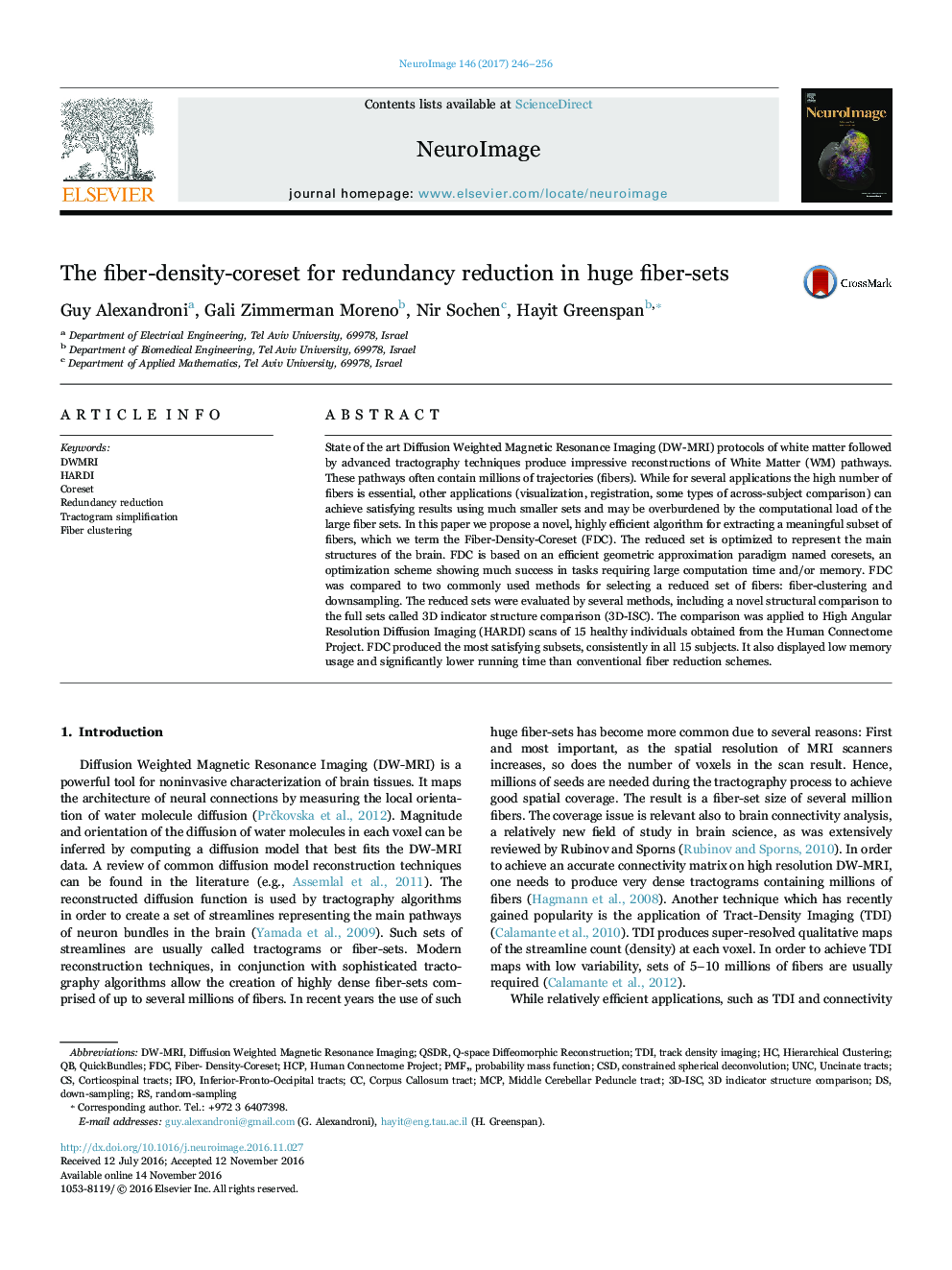| کد مقاله | کد نشریه | سال انتشار | مقاله انگلیسی | نسخه تمام متن |
|---|---|---|---|---|
| 5631335 | 1580864 | 2017 | 11 صفحه PDF | دانلود رایگان |
- New method, FDC, is suggested for reducing the size of tractograms.
- FDC removes redundant fibers while preserving the WM architecture.
- FDC is useful preprocessing for visualization, registration, atlas construction etc.
- FDC outperforms other common approaches based on several evaluation techniques.
- FDC is highly efficient in terms of memory and run time, relative to similar works.
State of the art Diffusion Weighted Magnetic Resonance Imaging (DW-MRI) protocols of white matter followed by advanced tractography techniques produce impressive reconstructions of White Matter (WM) pathways. These pathways often contain millions of trajectories (fibers). While for several applications the high number of fibers is essential, other applications (visualization, registration, some types of across-subject comparison) can achieve satisfying results using much smaller sets and may be overburdened by the computational load of the large fiber sets. In this paper we propose a novel, highly efficient algorithm for extracting a meaningful subset of fibers, which we term the Fiber-Density-Coreset (FDC). The reduced set is optimized to represent the main structures of the brain. FDC is based on an efficient geometric approximation paradigm named coresets, an optimization scheme showing much success in tasks requiring large computation time and/or memory. FDC was compared to two commonly used methods for selecting a reduced set of fibers: fiber-clustering and downsampling. The reduced sets were evaluated by several methods, including a novel structural comparison to the full sets called 3D indicator structure comparison (3D-ISC). The comparison was applied to High Angular Resolution Diffusion Imaging (HARDI) scans of 15 healthy individuals obtained from the Human Connectome Project. FDC produced the most satisfying subsets, consistently in all 15 subjects. It also displayed low memory usage and significantly lower running time than conventional fiber reduction schemes.
Journal: NeuroImage - Volume 146, 1 February 2017, Pages 246-256
